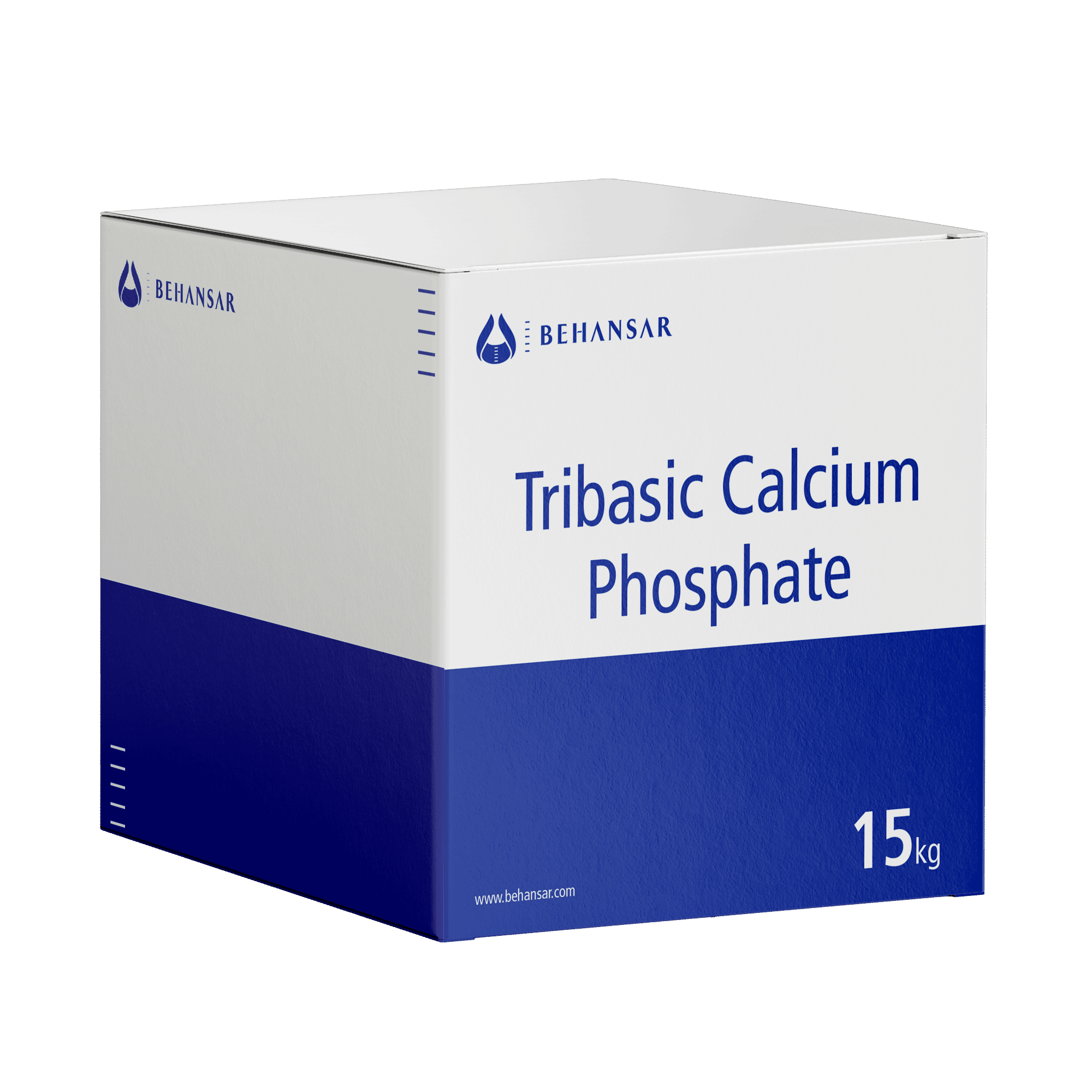Tribasic Calcium Phosphate
| Chemical Formula: | Ca₅(OH)(PO₄)₃ |
| Molecular weight | 502.31 |
| .CAS No: | 12167-74-7 |
| Applications: |

About Tribasic Calcium Phosphate
Calcium phosphate (CaP) is the common name of a family of minerals containing calcium cations (Ca2+) together with orthophosphate (PO43−), metaphosphate (PO3−), or pyrophosphate (P2O74−) anions, and sometimes hydrogen (H+) or hydroxide (OH−) ions. CaP is the principal form of calcium found in bovine milk and blood. It is the major inorganic constituent of bone (~60 wt % of bone), and the main constituent of tooth enamel (ca. 90%). Calcium phosphates with a Ca/P atomic ratio between 1.5 and 1.67 are called apatites (e.g., hydroxyapatite or fluorapatite).
Calcium phosphate (CaP) bioceramics are widely used in the field of bone regeneration, both in orthopedics and in dentistry, due to their good biocompatibility, osseointegration and osteoconduction.
Calcium phosphates are commonly used in medical applications in the form of cements, coatings, scaffolds, and paste.
Individual calcium phosphate phases like tribasic calcium phosphate are the major members of the CaP family that are of interest to biomedical applications.
α-tricalcium phosphate (α-TCP)
The third acidity of phosphoric acid is very weak and, although PO43− exists only in a very small amount at pH lower than 11 (according to the speciation curves of phosphoric acid at 37 ◦C, pK3 = 12.023), TCP salts can precipitate due to their very low solubility. Several different phases with a composition close to TCP exist. Crystalline TCP (α- and β-TCP) form only at high temperature; it is generally agreed that crystalline, pure, TCP cannot be obtained by direct precipitation from aqueous media. α-TCP is usually prepared from β-TCP by heating at above 1125 ◦C and quenching to prevent the reverse transformation; thus, α-TCP may be considered a high-temperature phase of β-TCP. Although α-TCP and β-TCP have the same chemical composition, they differ in their solubility and crystal structure. In the absence of humidity, both polymorphs of TCP are stable at room temperature; however, a density functional study has shown that the stability of the β-TCP crystal lattice exceeds that of α-TCP. Therefore, of the two, α-TCP is more reactive in aqueous systems, has a higher specific energy, and can be hydrolysed in aqueous solutions to CDHAp. Although α-TCP never occurs in biological calcifications, it is used as a component of CaP cements. The major disadvantage for using pure α-TCP is its quick resorption rate—faster than the formation of a new bone—which limits its use in biomedical applications.
| Product Number | Product Name | Form | Pharmacopoeia | Solvency | Storage conditions | Color | Purity | Additional information |
|---|---|---|---|---|---|---|---|---|
| 151300132 | Tribasic Calcium Phosphate | Powder | USP, BP | Freely soluble in 3 N hydrochloric acid and in 2 N nitric acid; practically insoluble in water; insoluble in alcohol. | Preserve in well-closed containers. | White powder | 34.0%-40.0% of calcium (Ca). | Odorless, tasteless powder. Is stable in air. |

